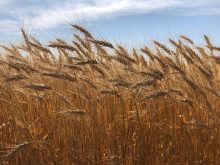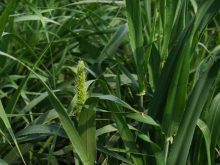Ontario’s Farm Products Marketing Commission will run a vote for the province’s oats and barley growers starting Friday, to decide whether Grain Farmers of Ontario (GFO) will be the growers’ voice going forward.
The commission will conduct a mail-in vote from Friday (Oct. 31) to Nov. 17 to see whether oat and barley growers wish to be represented by GFO. Ballots are to be mailed to eligible Ontario oat and barley growers Friday with responses due back to the commission by Nov. 17.
Oat and barley growers who don’t get a ballot are asked to contact the commission at 519-826-4220.
Read Also

CBOT Weekly: Watching for Chinese soybean purchases
As activity at the Chicago Board of Trade shifts into holiday mode through the New Year, independent analyst Terry Reilly pointed to three things to watch over the next few weeks.
“We believe that it is in farmers’ best interest to have representation in order to have the resources and skills to work on increasing profitability through research and market development,” Oat and Barley Representation Committee chairman Craig Martin said in a release Monday.
GFO “is well placed to address these goals for those of us who grow these crops,” said Martin, a seed dealer and grain processor who farms at West Montrose, Ont., north of Kitchener.
The committee said its proposal covers all oat and barley growers in Ontario — but only oats, barley and mixed grain marketed commercially to elevators and processors would be assessed licence fees.
On-farm use and farm-to-farm sales would be exempt from licence fees, much like the model GFO now uses for fees it levies on corn, soybeans and wheat.
For each tonne of oats or barley delivered to a licensed receiving point under the proposal, growers would pay the license fees to the elevator, which would then turn them over to GFO at “periodic intervals.”
The committee’s proposal estimates the per-tonne license fees for oats and barley at $1.65 and $1.30 respectively. At those rates, licence fees on oat and barley would be expected to yield $125,000 to $150,000 per year for GFO.
Oat and barley growers in Ontario don’t otherwise have any farm organization that directly represents their interests, the committee said recently, adding that the two crops in Ontario alone represent farm cash receipts of $82.8 million and 258,000 acres.
Without a representative group, the committee said, the two crops in Ontario don’t yet get “commensurate attention” in research priorities, market development and government program participation. — AGCanada.com Network














